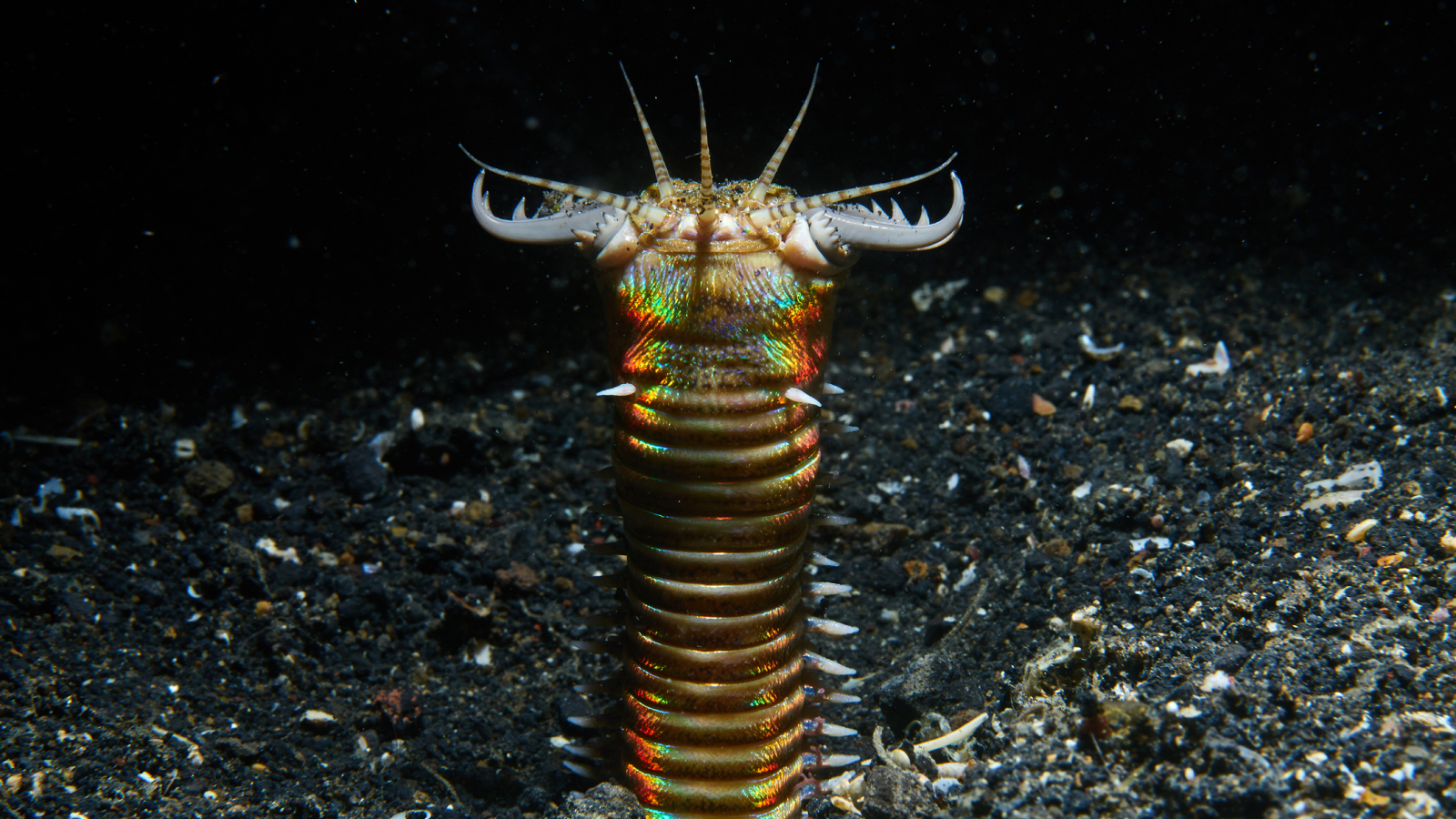The underwater world is full of fascinating and bizarre creatures, but few are as strange and terrifying as the Bobbit worm (Eunice aphroditois). This segmented marine worm, which can grow up to three meters in length, is a master of ambush, equipped with remarkable predatory tactics and a truly unique appearance.
Appearance and Habitat
Bobbit worms are typically found in warm oceanic waters, particularly in the Indo-Pacific region. They burrow into the ocean floor, leaving only their jaws exposed, ready to snatch unsuspecting prey. Their bodies are segmented and iridescent, displaying a range of colors that shimmer under water, adding to their mysterious allure.
Predatory Behavior
The Bobbit worm is an ambush predator. It relies on its lightning-fast reflexes and powerful jaws to catch prey. These worms have five antennae on their heads that act as sensory organs, detecting vibrations and chemical changes in the water. When an unsuspecting fish or crustacean ventures too close, the worm strikes with incredible speed, using its sharp, scissor-like jaws to grasp and pull the prey into its burrow.
Feeding Mechanism
Once the Bobbit worm captures its prey, it drags it down into its burrow. Unlike many other predators that consume their prey quickly, the Bobbit worm takes its time. It secretes a mucus-like substance to immobilize the prey, slowly consuming it over time. This method of feeding ensures that the worm can extract maximum nutrients from its catch.
Reproduction and Lifecycle
Bobbit worms reproduce sexually, with females releasing eggs into the water column. Males release sperm, and fertilization occurs externally. The larvae are planktonic, meaning they drift with the ocean currents until they mature and settle on the ocean floor. As they grow, they start to exhibit the characteristic behavior of burrowing and ambush predation.
Myths and Misconceptions
The name “Bobbit worm” is said to be derived from the infamous Lorena Bobbitt case, due to the worm’s scissor-like jaws. However, this is more of a tongue-in-cheek reference rather than a scientific naming. Despite their fearsome appearance and predatory behavior, Bobbit worms do not pose a threat to humans. They are more interested in small marine creatures and play a crucial role in maintaining the balance of marine ecosystems.
Ecological Importance
Bobbit worms are important members of the marine ecosystem. By preying on various smaller marine animals, they help control populations and maintain ecological balance. Their burrowing behavior also contributes to the aeration of the ocean floor, promoting healthy sediment turnover.
Fascination Among Aquarists
In recent years, Bobbit worms have gained a peculiar following among marine aquarists. Their unique appearance and predatory behavior make them a fascinating addition to home aquariums. However, keeping a Bobbit worm requires specific conditions and a deep understanding of their needs, making them suitable only for experienced aquarists.
Conclusion
The Bobbit worm is a testament to the diversity and complexity of life in our oceans. Its unique predatory strategies and striking appearance make it one of the most intriguing creatures of the marine world. As we continue to explore the depths of the ocean, who knows what other bizarre and fascinating creatures await discovery? The Bobbit worm serves as a reminder of the wonders that lie beneath the surface, in the mysterious and often overlooked world of the sea.

